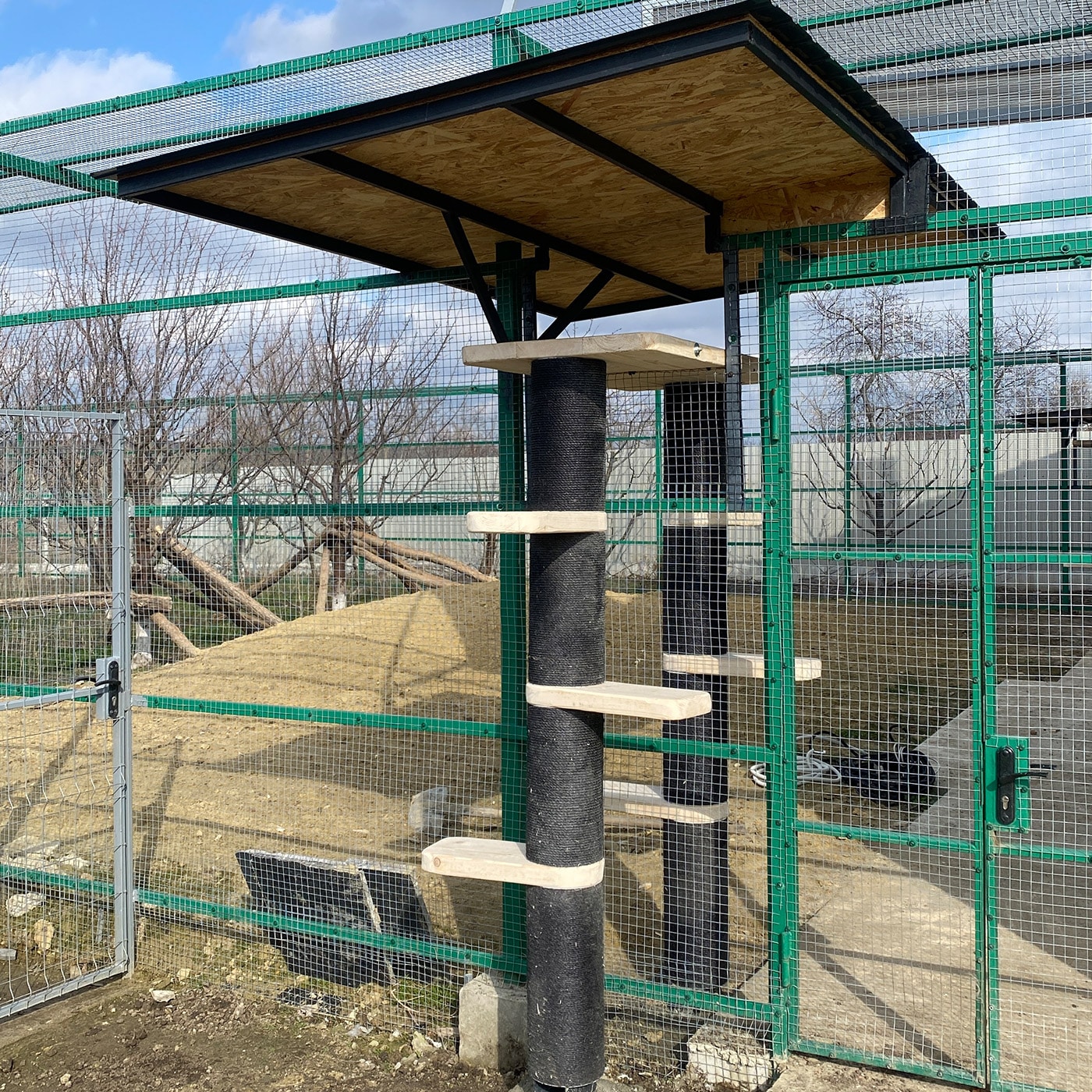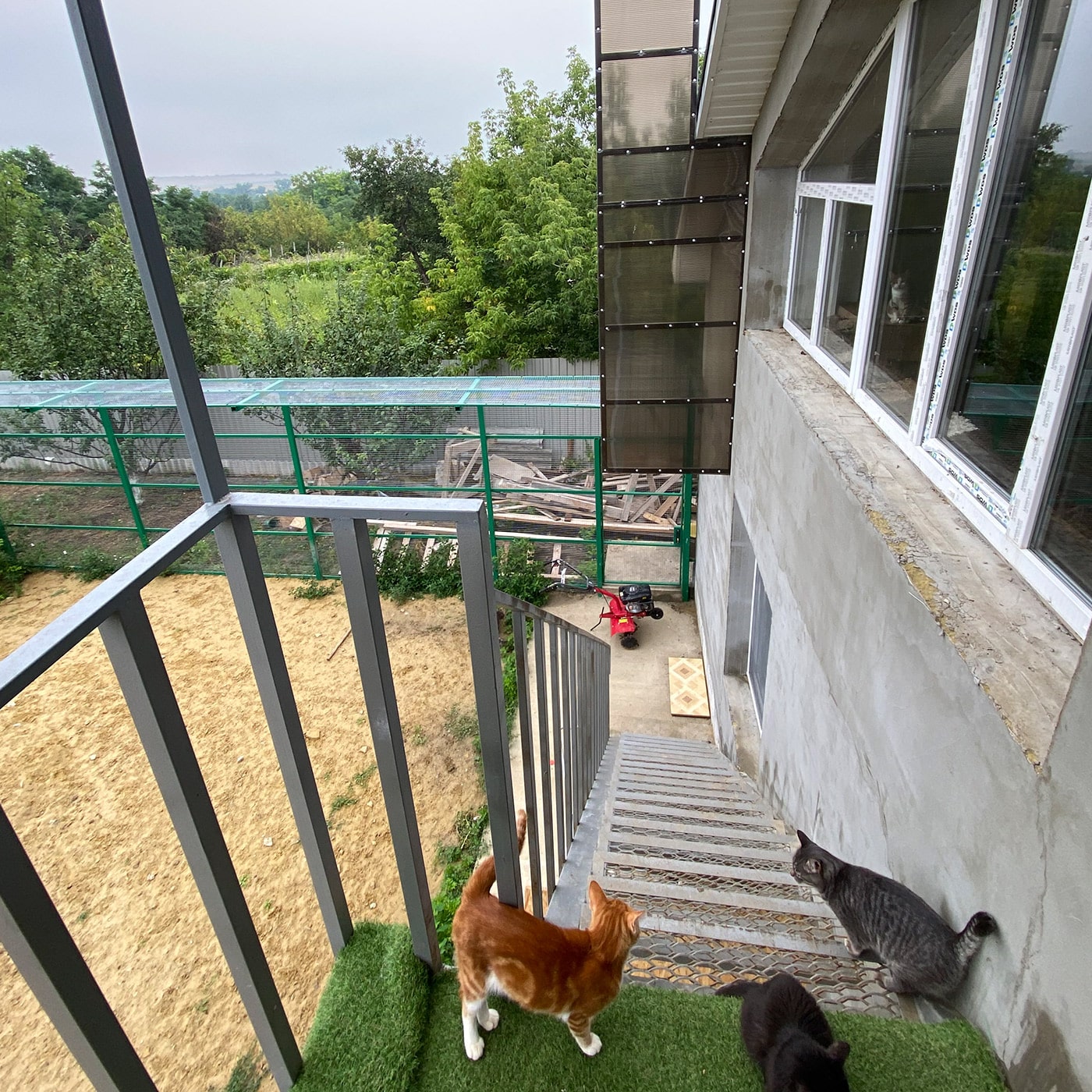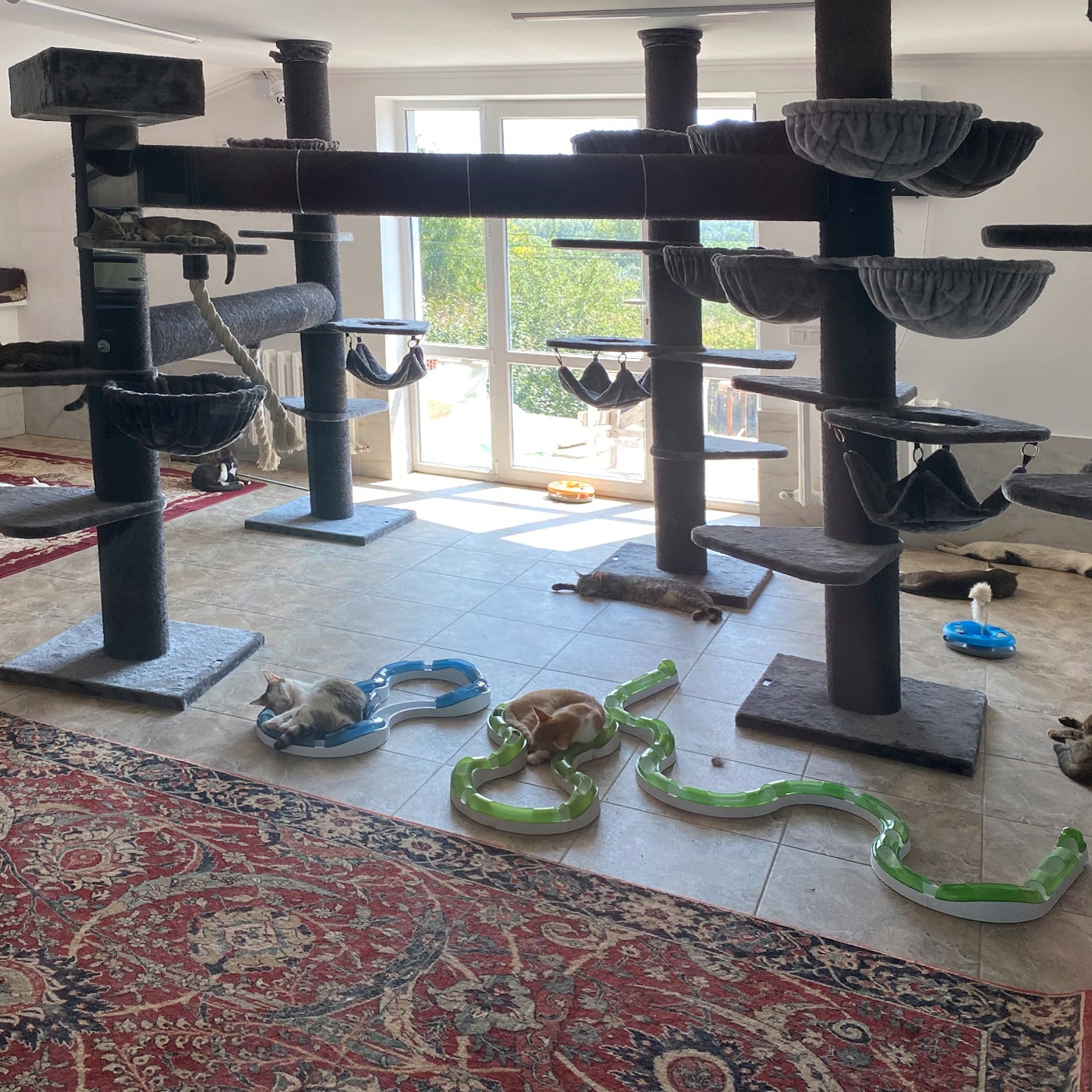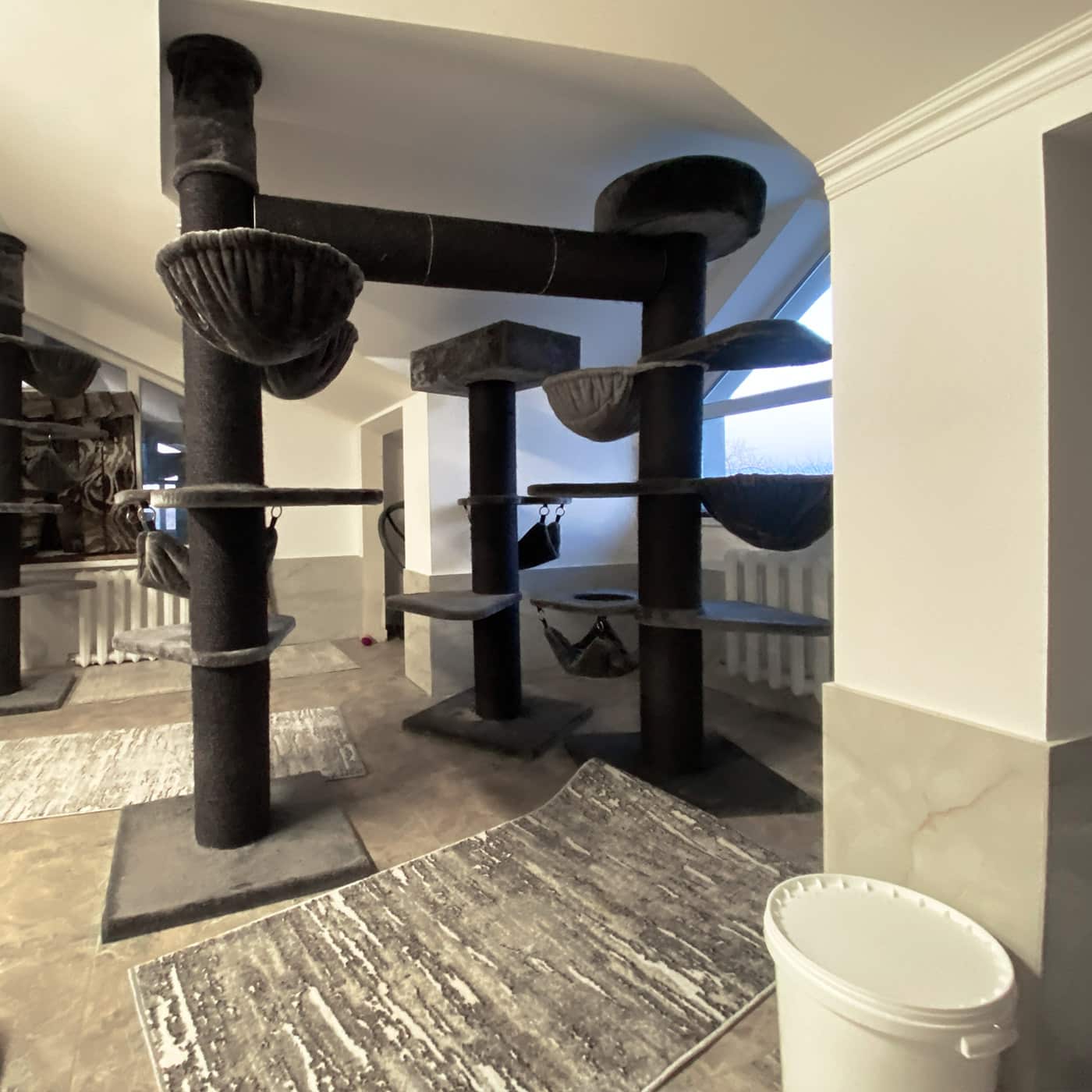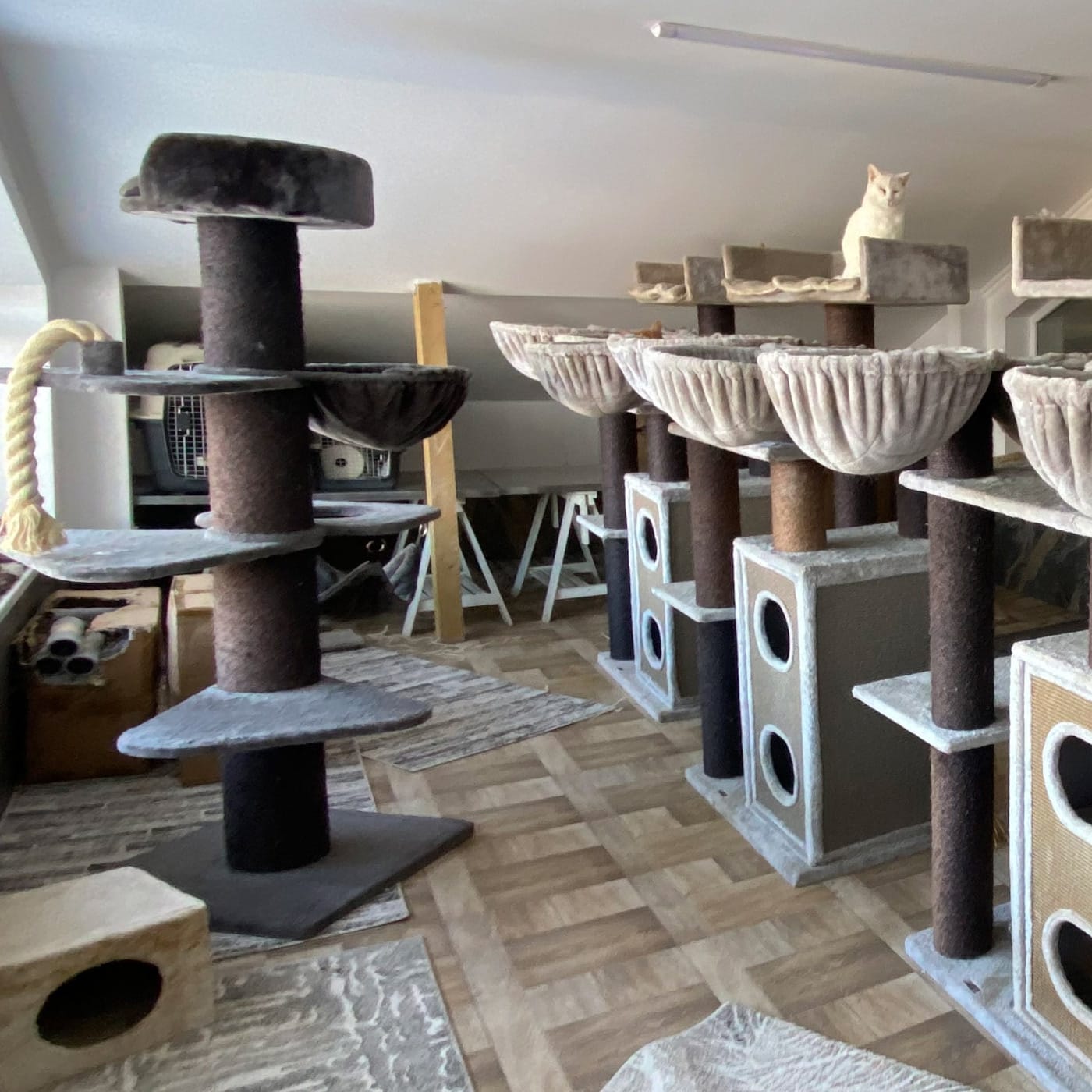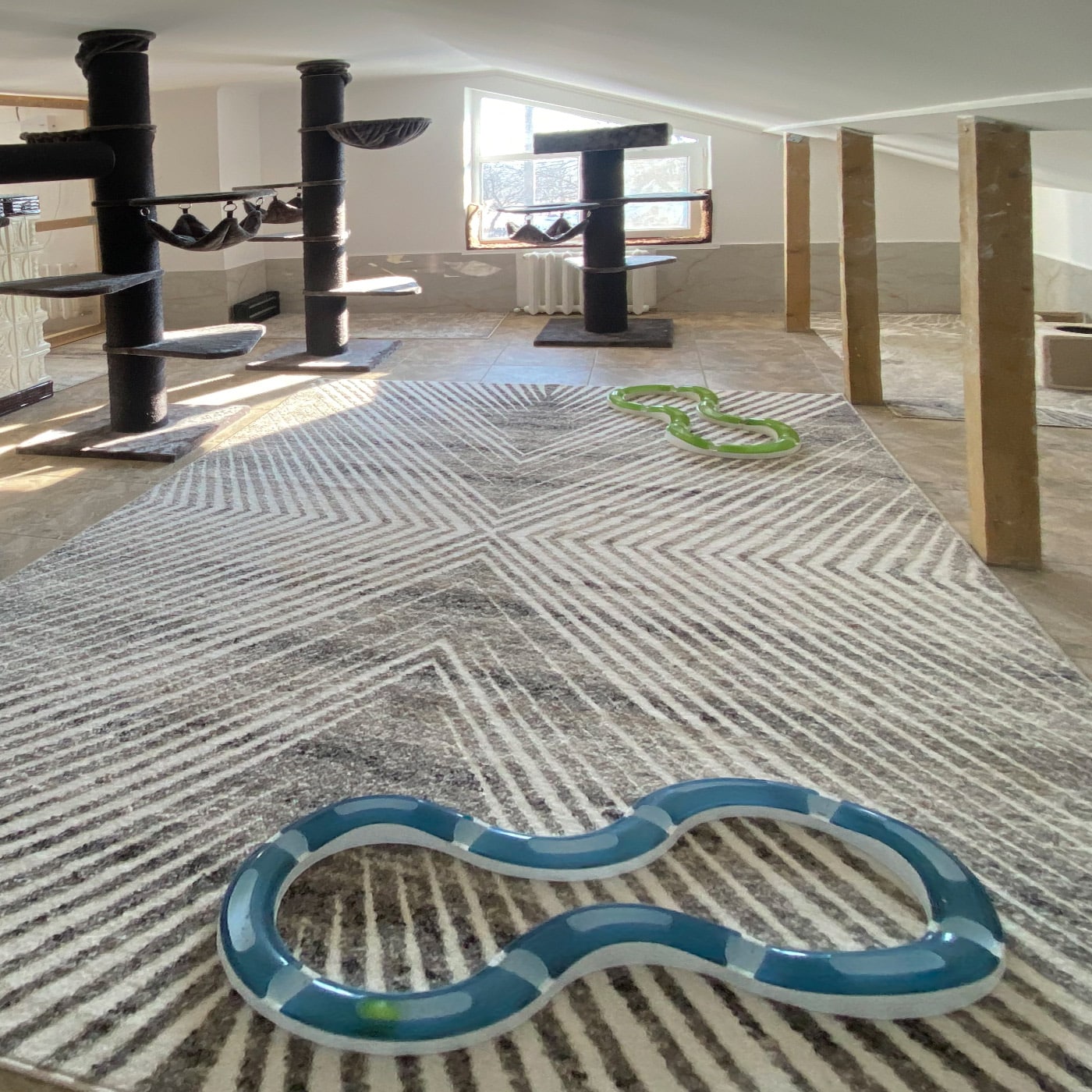How did the idea come about?
My wife, whom I accompanied as she returned to her home country, explained to me that in this country “cats are worth nothing,” and that once cats or kittens become inconvenient or too numerous, they are simply thrown out of moving cars into no man’s land. The animals, recognizing the vehicle and thinking “oh look, the car is back, now I’m going home,” often run toward fast-moving traffic — only to die quickly and painfully.
During the cold months, from October to March, the weather alone is enough to kill them. In addition, wild dogs are a constant threat, especially to cats and kittens that are used to some form of shelter (a house, barn, or similar). These abandoned animals are totally disoriented and frightened, with no chance of survival.
Even in towns and cities, no one seems to care. I once found a young cat dead in the middle of a pedestrian crossing in a low-speed zone. The more hardened individuals simply put them in a plastic bag, suffocate them, and throw them in the trash.
Instead of neutering, cats give birth 2–3 times a year, producing 3–5 kittens each time. These are then drowned days or weeks later. The mother suffers from mastitis because the milk isn’t being consumed, and she is harassed by tomcats who fight each other — often severely injuring themselves — trying to mate. It’s a cycle of pure misery.
Occasional actions “encouraged” by local authorities, which urge citizens to “clean up” their communities by poisoning, beating, capturing, or suffocating defenseless animals in plastic bags, are seen as a solution here. These replace the education, sterilization, and reduction of animal suffering one would actually expect from so-called “human beings.”
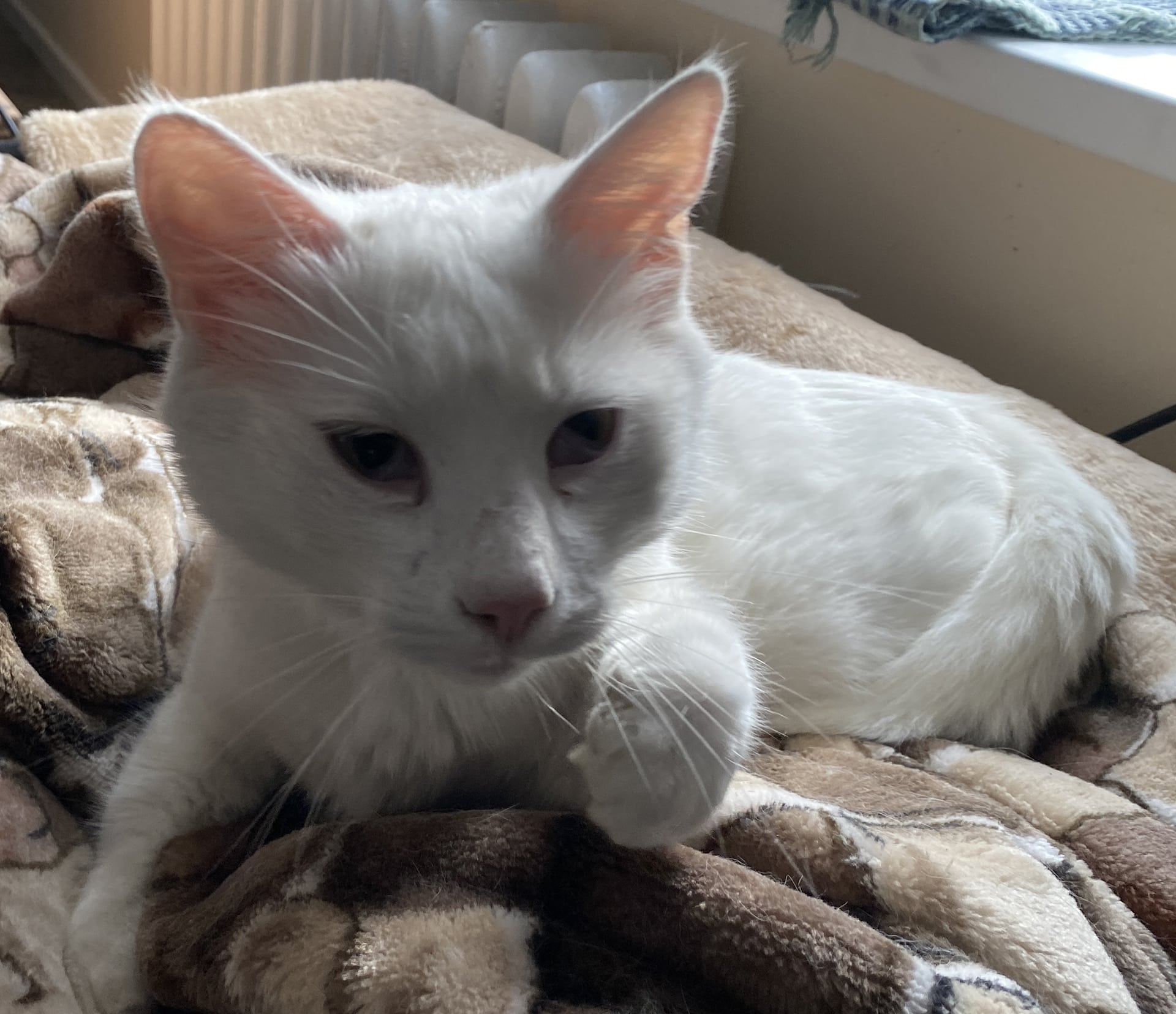
Flocki
Just a few days after our arrival, small 2–3-month-old kittens began showing up, looking for something to eat and some shelter from cars, the weather, and the many free-roaming, sometimes feral dogs. The very first was our snow-white and deaf (confirmed by a vet and proven daily by his COMPLETE indifference to the vacuum cleaner) “Flocki,” a soul of a cat.
Some of these little ones no longer had a voice because they were so starved; others, who could still meow, cried out so heartbreakingly — yet still found no mercy among the locals.
One must understand: this country is dirt poor. There’s a tiny, super-rich elite — yes, even Bugattis with MD plates, private jets, everything — a small, hardworking middle class, and a huge number of very, very poor people… and even more EXTREMELY poor people. After 3 years here, I’ve seen it firsthand: after the harvest with big machines, the first group of the “better-off” poor people come with horse and cart to gather fallen grain (corn cobs, ears of wheat, etc.). Then come those without even a horse, on foot, collecting every last kernel of wheat into sacks. I don’t mention this just to highlight the situation here, but to explain why there aren’t even mice, as one would expect in an agricultural country — mice that could feed a few cats. The cats in the villages beg for every scrap of bread they can get and look absolutely miserable.
Almost everyone here keeps a few chickens, which roam freely on public land, roads, and pretty much everywhere else because the grass and insects are free there. If a cat even comes close to a chick — which is essential for the survival of the residents — it is chased away, beaten, or shot.
Some cats, of course, never returned… and aside from a filthy grin and a remark like “damn cats,” there was no sign of what became of them.
There are also many people here who love cats, but as described, the overflow is massive, and the fate of these animals is cruel.
So two things must happen: we need to directly help the vulnerable, defenseless cats, and also support the impoverished, exploited country (by exporting local products to generate income for the local population), such as cat litter, honey, wine, tinctures, carpets and beds (for cats, of course!) — that was the idea.
Naturally, I also saw still-alive cats and kittens that had been abandoned on roadsides and in parking lots — at gas stations, hardware stores, next to dumpsters in towns and cities. Long story short, I’ve personally taken in 95 cats so far, each with its own story.
Two years ago, when we had “only” 7 cats in my wife’s tiny Moldovan childhood home, I already saw that there was more to be done here. So we built a larger house, with plenty of space for the cat sanctuary — nearly 280 sqm on one full, heated floor for winter shelter, with outdoor access to 3 hectares of our own land with trees, and a 400 sqm enclosure. This way, during chick season, they can all stay safely indoors — protected from being injured, beaten, chased away, or poisoned. That’s how the project you see today came to life.
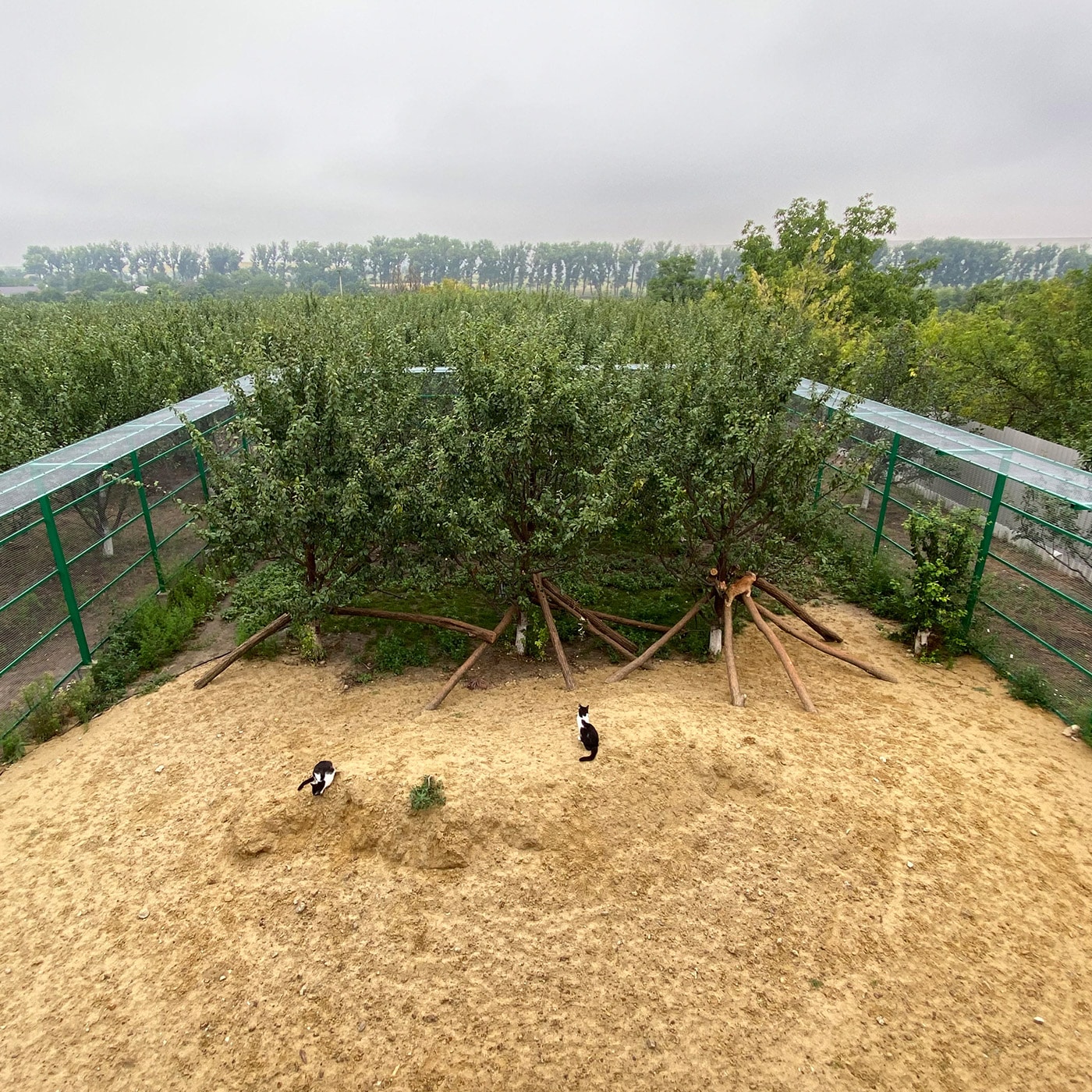
View of the outdoor area, in the foreground the 12×6 meter sand park, running, digging, doing business…
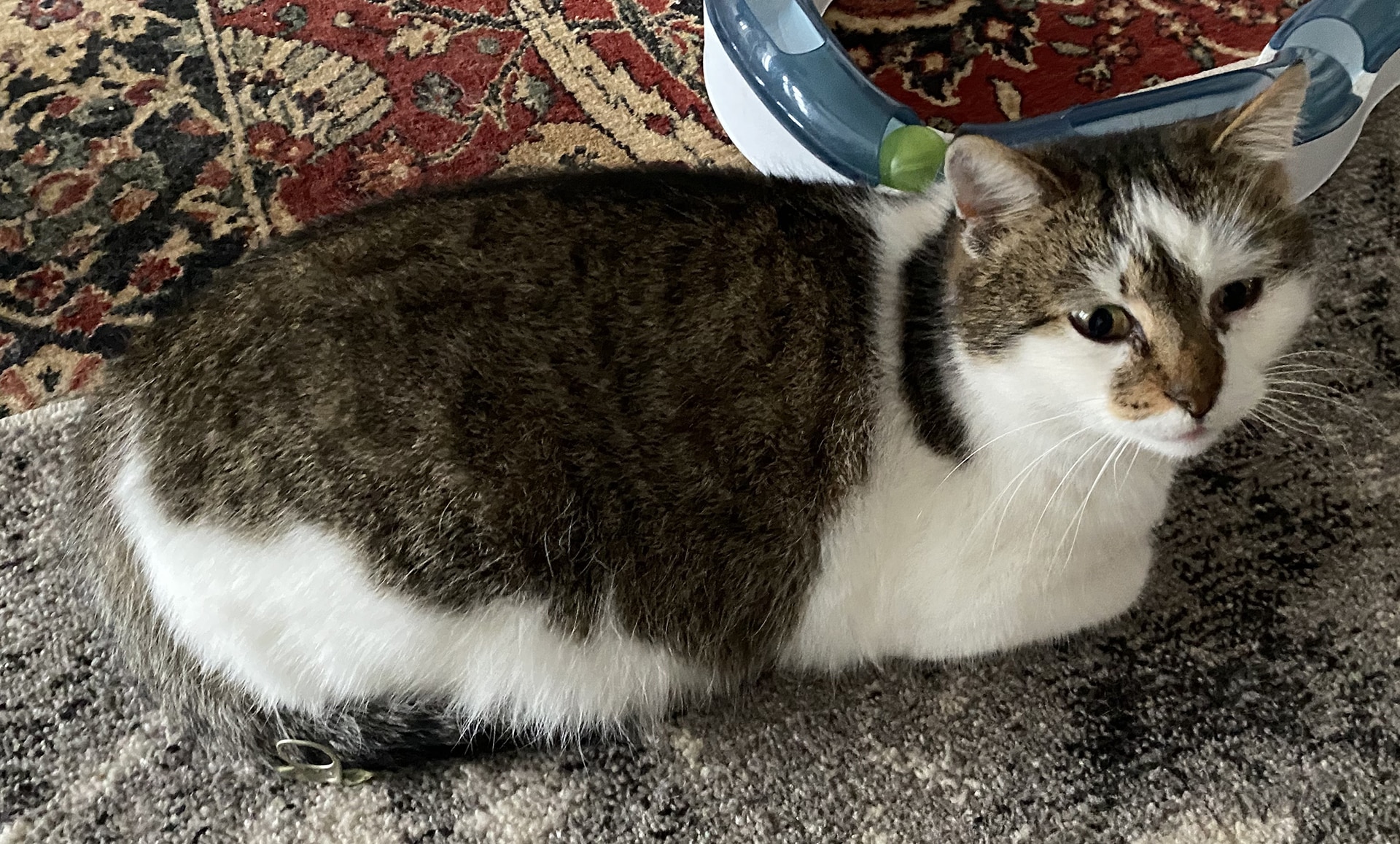
Some of his “buddies” from the area, also homeless and in terrible condition — including some females — became regular food guests and were immediately neutered. So even before the house was finished, a friendly, peaceful group of cats had already found good food and shelter in the old storage hall during the rapidly approaching winter.
For a Moldovan cat, anything is better than living without any connection to a house — especially in a place with no mice, as described above. Of course, this hall also needs to be heated in winter, with outside temperatures reaching minus 20 degrees Celsius.
